May 13, 2016
 I’m sometimes surprised at the information I end up digging into as part of my stories. In The Shark, the first of my The Forgotten Files novels, my protagonist, Virginia state trooper Riley Tatum, is an experienced tracker of humans, mostly missing people. If those people have been injured their condition can add
I’m sometimes surprised at the information I end up digging into as part of my stories. In The Shark, the first of my The Forgotten Files novels, my protagonist, Virginia state trooper Riley Tatum, is an experienced tracker of humans, mostly missing people. If those people have been injured their condition can add  to the clues about the shape they’re in, where they’ve been, and when. I foune this really interesting, especially the part about blood trails, and thought you might, too.
to the clues about the shape they’re in, where they’ve been, and when. I foune this really interesting, especially the part about blood trails, and thought you might, too.
First though, I want to note that, even though I researched several sources for background for The Shark, credit—and thanks—for the information presented below belongs to David Diaz, who shares it in his book Tracking Humans: A Fundamental Approach to Finding Missing Persons, Insurgents, Guerrillas, and Fugitives from the Law, written with V.L. McCann. Here goes . . .
Blood Color:
Dark Red indicates a lack of oxygen and suggests a cut vein or puncture rather than an artery. Blood would keep flowing unless the wound is treated and would leave smears or drops of blood in heavy vegetation. Minus lots of ground cover, bushes and other plants, a tracker would see more drops and fewer smears.
 Red would point to the injury involving an artery and “blood would flow in a regular, pulsating fashion” along with the person’s heartbeat and “heavy vegetation would contain a combination of smears, drops and patterns at regular but separated interval patterns.”
Red would point to the injury involving an artery and “blood would flow in a regular, pulsating fashion” along with the person’s heartbeat and “heavy vegetation would contain a combination of smears, drops and patterns at regular but separated interval patterns.”
Light red blood or blood that appears to include other liquids could mean an abdominal wound. It might be mixed with gastric, bile, urine or other matter. Patterns would be inconsistent with this sort of wound.
Pinkish blood results from a mixture of air, oxygenated blood and lung fluid and point to a punctured lung. It’s usually foamy.
In this excerpt from The Shark, Riley and canine tracker, Cooper, take the lead in the search for a suspect thought to be connected to the killing of a young woman.
A half hour later, she spotted the outlines of fresh boot prints. The trajectory of the impressions confirmed a westward bearing. The right foot impression was deep but the left shallow, a sign Carter was favoring the leg. His stride appeared shorter, suggesting his pace was slower.
Good.
As Riley’s gaze now swept over the lush green foliage, she spotted red droplets of blood clinging to leaves ahead. Like all the markers on the trail, the color and patterns of blood told a story. Dark-red blood implied a punctured vein. Light red meant blood diluted with gastric fluids from an abdominal wound. Pink and foamy signaled a possible chest wound.
This blood was dark red. Unoxygenated. No doubt from the stab wound, which had sliced a vein. Ahead, the path forked and traces of red dotted leaves on both sides.
Close to Cooper’s ear she whispered in Czech, the language he’d been trained to follow while working. “Aport.” Fetch.
Cooper sniffed the ground around the first blood droplets and then around the second set. At the second location, his sniffing increased and his tail wagged. “Good boy,” she whispered.
As they continued, crimson splashes were smeared on more green leaves. The distance between drops shortened to less than four feet. The track was now in its sixth hour and had begun to open his wound. He was suffering, likely angry, and primed to make a mistake if pressed.
Even better.
She lifted a leaf and touched the blood. Still viscous. Fresh. She raised her boot to step when she heard the snap of a twig. She drew her weapon. Cooper’s head rose and he glared toward the right. The dog watched the woods, but his body language didn’t alert her that Carter was close.
Slowly she crouched, gently pulling the tense dog to her. Her heart revved from steady to overdrive, forcing her to slow her breath and listen to the wind whispering in the trees. Tense seconds passed. But there was no more movement. Only silence.
She could fall back, but that was a gamble. Carter’s odds of escape greatly increased if he found his way out of the woods and got hold of a car. Cooper could track people, not vehicles.
Again, the grainy black-and-white surveillance footage of Carter’s fist pounding the skinny girl jabbed her gut. If Carter escaped, he would double back and drop that girl into a hole so deep no one would ever find her.
Standing, she looked up the trail into the dense brush. At five foot nine, she was tall for a woman, and though she was in peak shape, wrangling an injured, possibly armed suspect off the mountain in the fading light would be reckless. She’d stay close but would not engage, knowing at worst an overnight without food and water would drain Carter’s energy reserves, making him a softer target when backup arrived at first light.
Again, Cooper’s gaze cut right. This time she caught a faint flicker of movement. Someone else was there. Freezing, she searched the dense thicket. Had additional police arrived, or worse, one of Carter’s kin?
Her right hand tightened slightly around the gun’s grip as she waited. Watched. There was stillness. Silence. As hard as she searched, she saw no threat. Finally, Cooper looked away. Mouth closed, he sniffed faster as his tail wagged.
Up the trail, the snap of twigs was followed by a painful grunt. Carter. He was up ahead. Close. Grabbing her cell, she texted an update to the base station and seconds later a reply fired back.
Two deputies are one hour out.
Cooper remained alert and silent, a sign her hours of continuous training had paid off.
She typed, Roger.
Wanting a visual on Carter, she tucked her phone back in her pocket before she and Cooper inched forward through the branches. Monitoring her foot placement and her breathing, she made almost no sound. When she crested the next rise, she spotted Carter staggering toward a tree, one hand on a gun and the other on his bleeding thigh. He pressed his back to the thin trunk, slowly lowered to the ground, and pulled a water bottle from his pocket. He drained the container, then tipped his head back and closed his eyes. He thought he was alone. Safe.
Now it was a waiting game.
May 10, 2016
 My new book, The Shark, the first of my The Forgotten Files novels, will be published on May 24th. As I often do, I’m marking the remaining weeks with some giveaways. So, please take a moment to enter below to win an “evidence bag” filled with some of my earlier books in my Grab the Evidence Bag
My new book, The Shark, the first of my The Forgotten Files novels, will be published on May 24th. As I often do, I’m marking the remaining weeks with some giveaways. So, please take a moment to enter below to win an “evidence bag” filled with some of my earlier books in my Grab the Evidence Bag  Giveaway.
Giveaway.
I’ll give you a hint—in honor of my April book, Vulnerable, the “grab bag” will contain at least one of the Morgan of Nashville novels.  And a big thank you to all for making all four of the books—Cover Your Eyes, Be Afraid, I’ll Never Let You Go and Vulnerable— national bestsellers.
And a big thank you to all for making all four of the books—Cover Your Eyes, Be Afraid, I’ll Never Let You Go and Vulnerable— national bestsellers.
a Rafflecopter giveaway
May 9, 2016
 “Burton’s The Shark launches her Forgotten Files series with the dark tale of Riley Tatum, a Virginia state trooper who is still struggling to remember what happened when she was kidnapped in New Orleans as a teen . . . This romantic thriller is tense, sexy, and pleasingly complex. ”
“Burton’s The Shark launches her Forgotten Files series with the dark tale of Riley Tatum, a Virginia state trooper who is still struggling to remember what happened when she was kidnapped in New Orleans as a teen . . . This romantic thriller is tense, sexy, and pleasingly complex. ”
Publishers Weekly
“Precise storytelling complete with strong conflict and heightened tension are the highlights of Burton’s latest. With a tough, vulnerable heroine in Riley at the story’s center, Burton’s novel is a well crafted, suspenseful mystery with a ruthless villain who would put any reader on edge. A thrilling read.”
—RT Book Reviews
May 6, 2016

Propofol took center stage in the news several years ago when Michael Jackson died following an injection of it from physician Conrad Murray. Murray was later convicted of involuntary manslaughter. Nonetheless, propofol is rarely an instrument of death, let alone murder, though several cases have been brought to trial.

Anesthesia Medications Propofol is at top.
While abuse of the drug is spreading, propofol itself is not easily accessible to the general public as its primary use is with anesthesia. A respiratory depressant, it can affect both respiration and the heart. Since an overdose can cause death, it is also a weapon.
Used without intent to kill, effects last only a short time and the last evidence of it leaves deep tissue in about six days. It’s not illegal. It’s felt by users in just seconds and is somewhat easily obtainable by many in the medical community.
 Here’s a scene from THE SHARK in which Dr. Kincaid, the Medical Examiner, Joshua Shield, head of Shield Security, former FBI agent Clay Bowman and Virginia state trooper Riley Tatum look for leads in a murder—and suspect propofol as the means.
Here’s a scene from THE SHARK in which Dr. Kincaid, the Medical Examiner, Joshua Shield, head of Shield Security, former FBI agent Clay Bowman and Virginia state trooper Riley Tatum look for leads in a murder—and suspect propofol as the means.
He released the button and the elevator descended, the doors opening to the cool antiseptic air of the medical examiner’s offices and Joshua Shield.
Shield was dressed in his trademark dark suit with his shock of white hair combed off his angled face. He strode straight to them, his attention riveted on Riley. Dark eyes collected and inventoried details quickly. “Trooper Tatum. I’m Joshua Shield.”
“I recognize you from your press pictures.”
Bowman noticed that most people were intimidated by Shield. They dropped gazes, shuffled feet, or fidgeted in some way. Not Riley. She glared at him as if he were a rookie intern late for his first briefing.
Shield extended his hand to her. “Nice to finally meet you,” he said. “Mr. Bowman speaks well of you.”
Clasping hard, she held his gaze.
“Solving this case is a team effort,” Shield said.
Smiling, she shook her head. “We’ll see.”
Bowman gave her props for not pulling punches.
“Consider the advantages of my expertise,” Shield said. “My company resources helped you in the past.”
“You were an uninvited guest that I could have managed without.”
He grinned as if enjoying the sparring.
Before he could respond, Dr. Kincaid appeared. She wore a lab coat and glasses that covered slightly bloodshot eyes.
“Dr. Kincaid,” Bowman said. “We appreciate you meeting us. Sorry to get you out of bed so early on a Saturday morning.”
“Mr. Bowman, Mr. Shield, you gentlemen have friends in powerful places.” Calm and unruffled, she extended her hand to both.
Shield shook her hand. “We help each other out when we can.”
Dr. Kincaid glanced at Riley. “I’m assuming Agent Sharp called you.”
“No, it was Mr. Bowman. But I contacted Agent Sharp.”
“Good,” Dr. Kincaid said. “Follow me.” She led them down the long hallway and pushed through a set of double doors. “I understand you also want to see Vicky Gilbert’s body.”
“Correct,” Shield said.
“Your timing is fortuitous. The funeral home is picking up her remains in a couple of hours. Her mother opted for cremation.”
“And you’ve done a complete exam?” Shield asked.
“I have. I’ve collected enough samples so that we can run any kind of test conceivable in the future if necessary. The Gilbert family is anxious to have a memorial service.”
“Their daughter ran away from home over a month ago and they didn’t call the police or try to find her,” Riley said. “What’s the big rush now?”
A slight shift in Riley’s tone could have made her sound bitter. But she kept her voice monotone, effectively hiding any potential anger or resentment.
Bowman reached in his breast pocket and removed a slip of paper. “Dr. Kincaid, I’d like you to test for this sedative.”
“Propofol? That’s a very powerful narcotic and I don’t see it often.”
“If we’re dealing with the man we suspect is the killer, this is likely the drug he used on his first four victims. This killer is a creature of habit. The sedative is one of his signatures.”
Apr 29, 2016

We’ve all heard talk about CSI Effect—people watch crime shows and movies and read mystery and suspense novels and start expecting all sorts of cutting edge forensic technology is available at crime scenes and to analyze evidence. Some think that test results can happen in hours or days, instead of weeks. When a case goes to trial, it may be that some jurors are anticipating lots more forensic evidence than is possible or they’re putting less emphasis on circumstantial evidence.
Also discussed is another element of CSI Effect—criminals knowing more than ever before about police and forensic procedure and behaving accordingly.
 Vernon J. Geberth is the Former Commander of Bronx Homicide, New York City Police Department and author of Practical Homicide Investigation: Tactics, Procedures, and Forensic Techniques, which is used by the FBI, homicide departments, lawyers and investigators across the country. He addresses the criminal side of C.S.I. Effect in his article for PI Magazine: Journal of Professional Investigators in which he refers to “staging” the scene of a crime.
Vernon J. Geberth is the Former Commander of Bronx Homicide, New York City Police Department and author of Practical Homicide Investigation: Tactics, Procedures, and Forensic Techniques, which is used by the FBI, homicide departments, lawyers and investigators across the country. He addresses the criminal side of C.S.I. Effect in his article for PI Magazine: Journal of Professional Investigators in which he refers to “staging” the scene of a crime.
He defines the process saying “staging a scene occurs when the perpetrator purposely alters the crime scene to mislead the authorities and/or redirect the investigation. Staging is a conscious criminal action on the part of an offender to thwart an investigation.”
He also points out the perpetrator’s side of C.S.I. Effect. “The problem is that criminals read the same books and watch the same TV shows as everybody else, so they are gaining insight into the investigative process as well as the value of trace evidence and have become more savvy. These ‘CSI Criminals’ attempt to prevent leaving evidence at crime scenes. Offenders are now ultra-careful not to leave any blood, fingerprints, body hair or anything else that may identify them in the crime scene.”
 Here’s an excerpt from VULNERABLE showing just that—names and some narrative have been changed to avoid spoilers.
Here’s an excerpt from VULNERABLE showing just that—names and some narrative have been changed to avoid spoilers.
“He pressed his finger on the back doorbell. As bell chimes echoed in the house, he pulled a clean handkerchief from his coat pocket and wiped the doorbell button clean. Lights clicked on inside. Fast, determined footsteps approached. By the sound of it, the old man wasn’t happy about the interruption . . . the door jerked open to Jim Simmons’s frowning face. An instant passed as the old man stood and stared . . .
Ken grinned. “Mr. S. How’s it going?”
Mr. Simmons blinked. The anger that always buzzed behind his gaze softened. “Ken. What are you doing here?”
He removed a silver flask from his pocket. “I thought we could drink a toast . . .”
They moved down a carpeted hallway into the brightly lit kitchen . . . “Can I get you something to eat? . . . Let me make you a sandwich.”
“I’d like that.”
Ken took another drink from the flask, replaced the cap, and stuck it back in his pocket. He settled on a bar stool . . . Mr. Simmons carefully made the sandwich, set it on a plate, and pushed it toward him before turning back to the refrigerator to dig out a couple of beers . . .
The old man twisted the top off his beer and carefully set the top on the counter . . . “You spent time in Texas, didn’t you?”
“Sure.” Ken balled up his napkin and tossed it on his plate.
“The cops showed me a picture of a guy in Austin. I didn’t recognize him at first.”
“Really?”
Simmons looked at him, his gaze hardening as if pieces of a puzzle clicked into place.
Ken smiled and reached in his pocket for latex gloves . . . He tugged on the gloves . . . “She told me what you made her do . . . if the cops find out what you did . . . you’ll be ruined.”
“You wouldn’t do that.”
“I would.”
“I can crush you without breaking a sweat, kid. Don’t ever think you can threaten me.”
Ken shifted his grip around the neck of the beer bottle as if it were a club. Moving with swiftness he’d learned on the football field, he raised the bottle and lunged across the kitchen island, cracking the glass against the side of the old man’s skull . . .
Ken’s brain morphed from thinking to primal as he moved fast, scrambling around the island and landing hard blows with the bottle on the old man’s face. Simmons staggered and fell back to the floor. A look of panic and disbelief swept over the old man’s gray eyes.
Ken reached in his pocket and pulled out a clear plastic bag. With a snap he opened it and straddled Mr. Simmons. He pulled it over the man’s head and twisted the ends shut, cutting off his air flow. Ken settled his weight on Simmons’s chest and held the bag in place as his victim struggled for air. Several minutes passed until finally, Simmons’s eyes rolled back in his head and Ken was certain he was dead.
Ken removed the bag and checked for a pulse. There was none. Satisfied, he poured out the remaining beer in the sink. He dumped both bottles in his plastic bag as well as the remains of the sandwich. He turned on the hot water tap and when steam rose from the now hot water, he washed the plate and dried it with a paper towel, which he used to wipe down the counter.
As he backed away, his heart still thundered in his chest.
 I’m sometimes surprised at the information I end up digging into as part of my stories. In The Shark, the first of my The Forgotten Files novels, my protagonist, Virginia state trooper Riley Tatum, is an experienced tracker of humans, mostly missing people. If those people have been injured their condition can add
I’m sometimes surprised at the information I end up digging into as part of my stories. In The Shark, the first of my The Forgotten Files novels, my protagonist, Virginia state trooper Riley Tatum, is an experienced tracker of humans, mostly missing people. If those people have been injured their condition can add 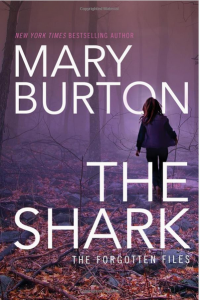 to the clues about the shape they’re in, where they’ve been, and when. I foune this really interesting, especially the part about blood trails, and thought you might, too.
to the clues about the shape they’re in, where they’ve been, and when. I foune this really interesting, especially the part about blood trails, and thought you might, too.![]() Red would point to the injury involving an artery and “blood would flow in a regular, pulsating fashion” along with the person’s heartbeat and “heavy vegetation would contain a combination of smears, drops and patterns at regular but separated interval patterns.”
Red would point to the injury involving an artery and “blood would flow in a regular, pulsating fashion” along with the person’s heartbeat and “heavy vegetation would contain a combination of smears, drops and patterns at regular but separated interval patterns.”
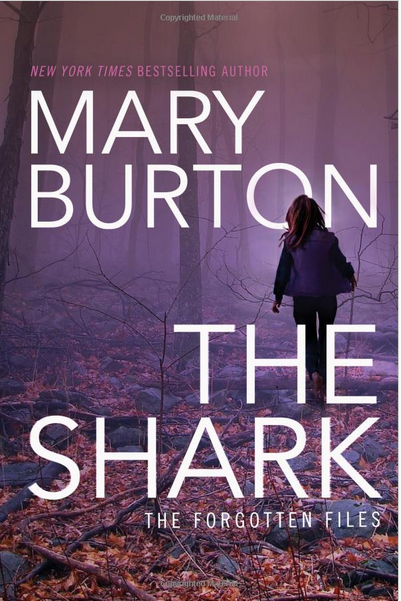 My new book,
My new book, 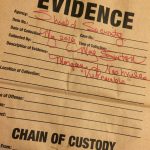 Giveaway.
Giveaway.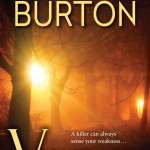 And a big thank you to all for making all four of the books—
And a big thank you to all for making all four of the books—
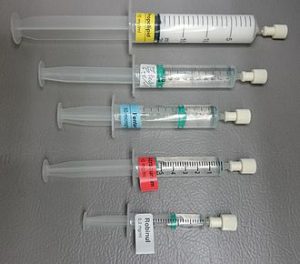

 Vernon J. Geberth is the Former Commander of Bronx Homicide, New York City Police Department and author of
Vernon J. Geberth is the Former Commander of Bronx Homicide, New York City Police Department and author of 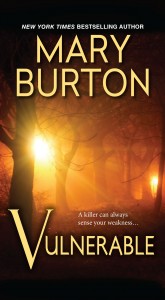 Here’s an excerpt from
Here’s an excerpt from